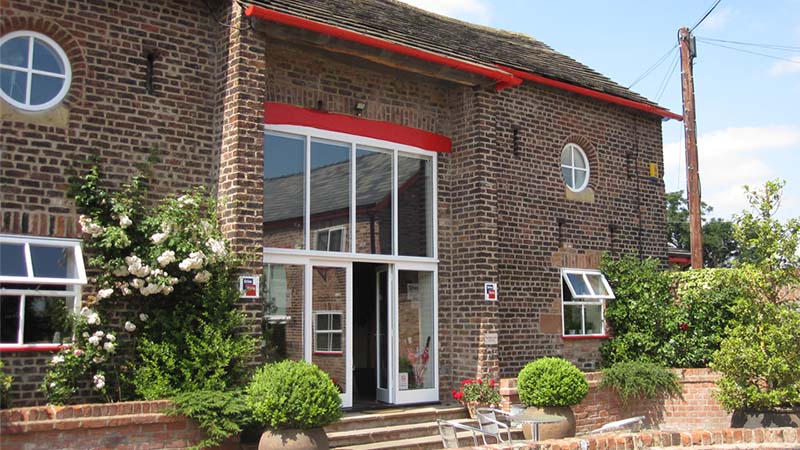What’s the story behind DriveWorks HQ?
DriveWorks HQ is a 250 year old barn situated on Laskey Lane Farm in Thelwall, Cheshire. The barn has been restored and modernised to become the home of DriveWorks but over ten centuries ago it was very different.

Thelwall
At that time, Thelwall was a frontier town, positioned south of the river Mersey.
The Danes occupied the lands to the north and the Saxons held Thelwall and the lands to the south of the Mersey.
Thelwall’s existence was first officially recorded in the Anglo-Saxon Chronicle of AD923 when King Edward the Elder is said to have ordered “the burgh at ThelWael” to be repaired and manned as a defence against the Danes and Northumbrians.
This account can been seen on the gable end of the 17th century Pickering Arms pub in the village centre – just down the road from DriveWorks HQ.
Laskey Farm
DriveWorks HQ is situated on the Laskey Farm site, constructed in the mid 1700s. There is an oak beam on site dated 1672 and the initial WM. The discrepancy in dates is explained by the fact that old oak built ships were once brought up the Mersey to be broken up for valuable building timbers.
Our site was originally part of the large Stanton Estate – the Stanton Manor House is now Chaigeley School next door.
Laskey Farm was occupied as a tenant by John Cooke (the present owner’s Great Grandfather) until 1928 when his son-in-law George Platt purchased it for £1,000 from the Stanton family.
Laskey Farm operated as a working farm until the 1950’s when Arthur Platt started the process of developing the farm buildings as commercial premises.
Preserving History
All of the surviving buildings are named after their original uses, which explains the names of the DriveWorks offices:
• The Barley Store
• Bridleside
• The Battery House
• Springbrook
The names of our neighbouring buildings, occupied by other businesses are listed here.
All of the original farm buildings once had the sandstone roofs common throughout 17th century Cheshire. These were extremely thick heavy slabs and only one such roof at Laskey Farm now remains.
The roofs of the Barley Store and the Buttery were renovated in 2001 and the material preserved to maintain the unique character of typical Cheshire building.
Next to the entrance of the Shippon building (Cheshire name for a cattle barn) are two cattle troughs each carved from a single piece of sandstone. These are the only surviving Laskey Farm troughs and are well over two hundred years old.
Laskey Lane
The farm buildings are all situated down Laskey Lane that originally ran down to the River Mersey and over a wooden bridge across to Woolston and Warrington. The name Laskey is thought to be a shortening of Last Quay which refers to the fact that it was once the furthest navigable point up the Mersey from Liverpool.
Laskey Lane fell into disuse in the 1890’s with the cutting of the Manchester Ship Canal which re-routed the Mersey to the north and made the bridge obsolete.
It wasn’t until 2001 when Councillor Mawer approached the Platt family on behalf of Warrington Borough Council. With the helping hand of a £40,000 grant, the southern part of Laskey Lane was restored as a permissive bridleway. Today, this allows horse riders’ access to the picturesque canal banks.